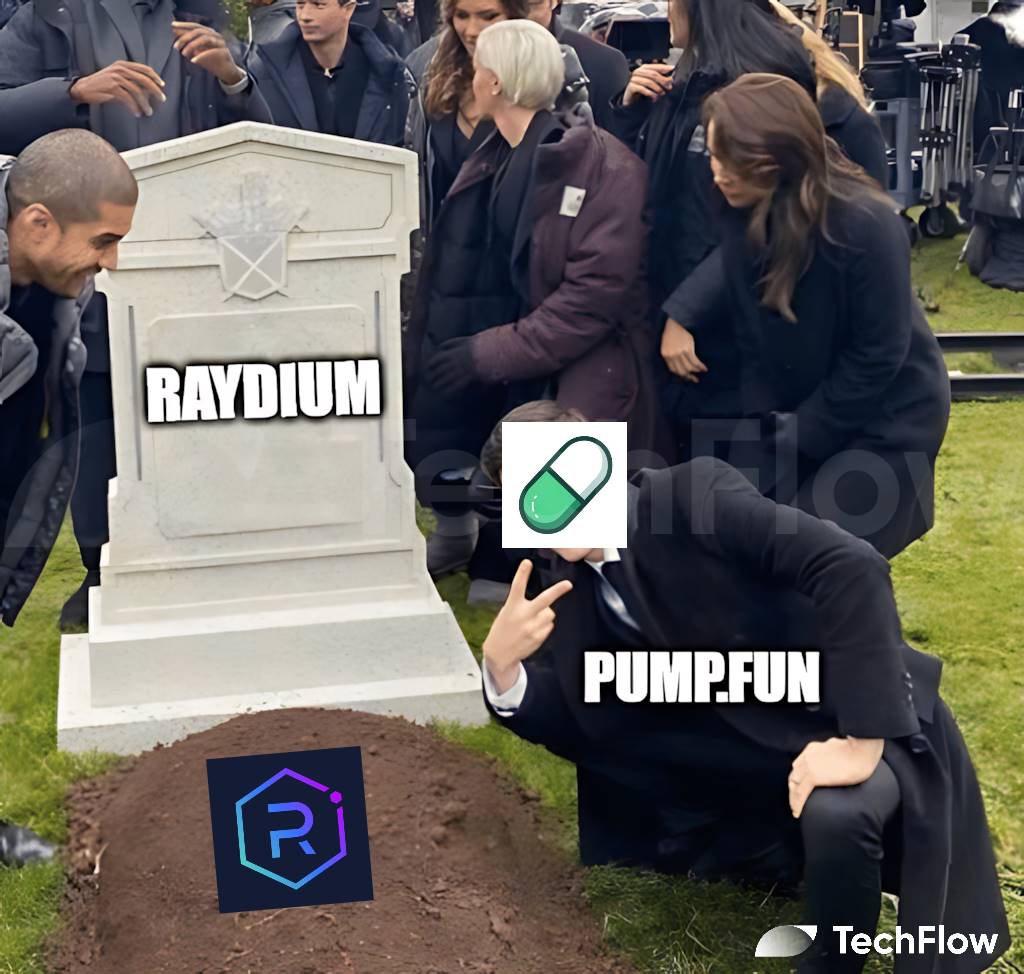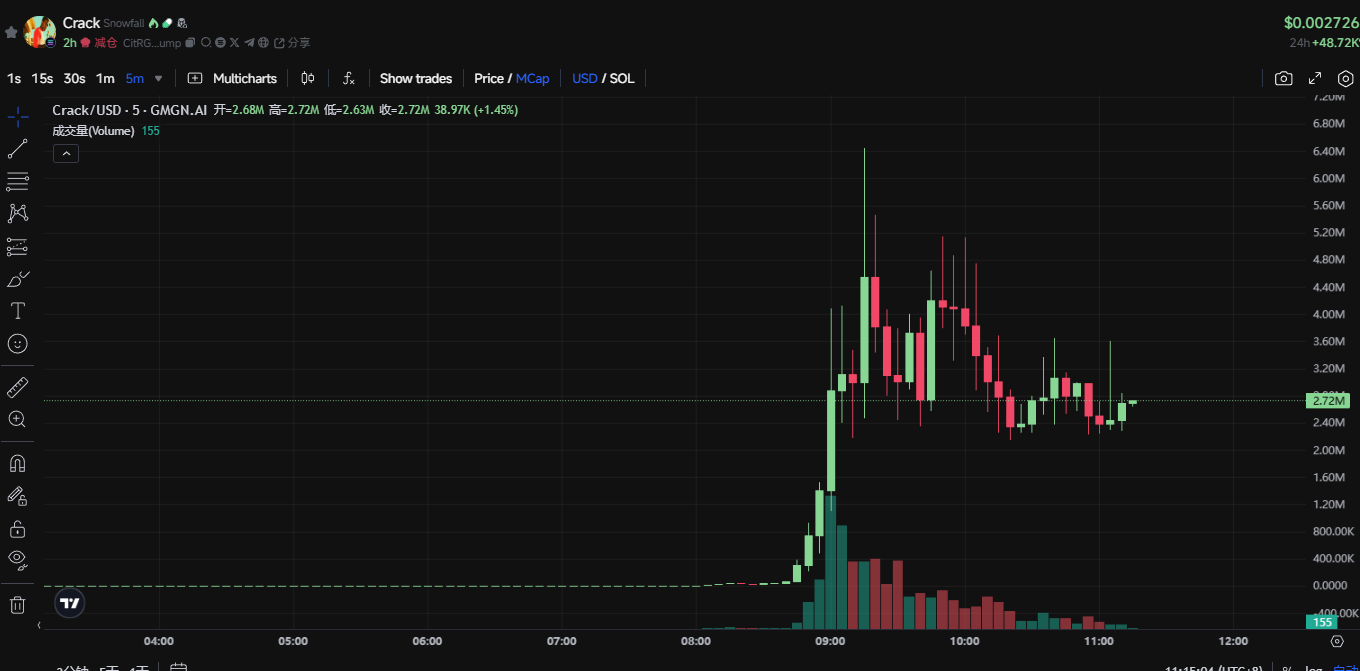Original author: TechFlow

“Whoever has, to him more will be given; but whoever does not have, from him even what he has will be taken away.”
---Matthew
On the chain, the Matthew effect of the strong getting stronger has never stopped.
For example, Pump.fun has begun to quietly do Raydium's work: today it secretly launched a self-built AMM pool, trying to divide the liquidity income that originally belonged to Raydium.
At present, the page of this self-built AMM ( http://amm.pump.fun ) is very simple. You can swap any token like other DeFi products.
However, the idea behind this product may not be simple.
As we all know, Pump.fun has attracted a large number of Degens with its unique internal and external disk mechanism and memecoin culture.
The user's transaction is first matched on the internal market of Pump.fun, relying on the liquidity of the platform to complete the transaction; when the internal market is full, the transaction will be routed to the external market, which actually relies on the liquidity pool of Raydium.
In this model, Pump.fun has always been Raydium's "traffic provider", but is therefore subject to Raydium's rules. Whenever a transaction flows to the external market, Pump.fun needs to pay a portion of the transaction fee, and this portion of the profit eventually flows to Raydium's liquidity provider (LP).
Raydium itself is one of the most important AMM platforms in the Solana ecosystem and an important infrastructure for DeFi users to obtain liquidity. It also provides liquidity pool services for many projects on Solana, and its TVL (total locked volume) has long been at the forefront of Solana.

As Solana’s “liquidity center”, Raydium occupies a pivotal position in the ecosystem. However, Pump.fun’s new move is challenging this pattern:
Pump.fun is no longer satisfied with being Raydium's "traffic provider", but is trying to become a "controller" of liquidity.
The business behind building your own AMM pool
By building its own AMM, Pump.fun can transfer external liquidity from Raydium to its own platform, thereby fully controlling the distribution of transaction fees.
If Pump.fun's strategy succeeds, Raydium will not only lose part of its liquidity source, but its revenue model and ecological status will also be impacted.
So, how is this account calculated?
1. Raydium’s revenue model: Pump.fun’s “hidden costs”
Under the current model, Pump.fun's external transactions rely on Raydium's liquidity pool, and each transaction will incur a certain fee, which will eventually flow to the Raydium ecosystem.
Raydium's standard fee is 0.25% per transaction, including:
0.22% is allocated to Raydium’s liquidity providers (LPs).
0.03% is used for $RAY repurchase and ecological support.
Pump.fun’s trading volume: Assume that Pump.fun’s daily trading volume is $100 million, of which 5% of the trading volume (approximately $5 million) is routed to Raydium’s external disk.
Pump.fun's hidden costs: Based on a 0.25% handling fee, Pump.fun needs to pay Raydium $12,500 per day, or about $4,562,500 per year.
For a fast-growing platform, although this fee has decreased compared to before, it is still a dependence on external platforms.

2. Potential benefits of building your own AMM
By building its own AMM, Pump.fun can transfer the liquidity of the external market from Raydium to its own platform, thereby fully controlling the distribution of transaction fees. So, how much potential profit can this move bring?
New revenue model: Assume that Pump.fun’s self-built AMM charges the same fee as Raydium (0.25%), but all fees belong to the platform:
Daily external trading volume remains at $5 million.
Based on a 0.25% handling fee, Pump.fun can directly earn $12,500 in revenue every day.
The cumulative annual revenue is approximately US$4,562,500.
Net income after deducting LP costs: If Pump.fun's AMM does not rely on external LPs, but liquidity is provided by the platform itself, then this income will belong entirely to the platform and does not need to be distributed to other liquidity providers.
3. Besides money, what else is Pump.fun interested in?
Building its own AMM will not only bring direct revenue growth, but also significantly enhance Pump.fun’s control over the ecosystem, laying the foundation for future development.
Under the current model, Pump.fun's external trading relies on Raydium's liquidity pool, which means that Raydium controls the user's trading experience and liquidity stability.
After building its own AMM, Pump.fun will have full control over the rules and fee distribution of the liquidity pool, thereby enhancing its control over users.
After controlling liquidity, Pump.fun can further launch more DeFi products (such as perpetual contracts, lending agreements, etc.), thereby building a closed-loop ecosystem.
For example, Pump.fun can directly support the issuance and trading of memecoin through its AMM pool, providing more gameplay for its community.
Related token price changes
After Pump.fun announced the launch of its own AMM, Raydium's token $RAY fell, and the current daily decline has reached 20%.
This phenomenon may reflect the market's concerns about its future income and status.
Pump.fun’s strategy could pose a long-term threat to Raydium, especially in terms of liquidity migration and fee income.
But on the other hand, after Pump.fun built its own AMM pool, the price of Crack, a MEME token used to test the liquidity pool, rose rapidly, with its market value reaching as high as US$4 million at one point.
CA:
CitRGsrgU7NjaXsxdMFc7sfsxtSnPdtkhHJqbPvhpump

Among the few market hotspots, the test tokens of AMM pools may continue to fly for a while.
The spirit of challenge is obvious
After building its own AMM, if it runs smoothly, Pump.fun will have full control over external liquidity, thereby significantly increasing revenue.
By integrating internal and external liquidity, Pump.fun is able to build a completely self-consistent on-chain Meme DeFi ecological closed loop.
From grabbing attention traffic to grabbing funds, Pump.fun is clearly transforming from "relying on external liquidity" to "own liquidity".
After an innovative platform has a larger user base, it will certainly have the opportunity to shake up the status of traditional DeFi and the on-chain ecological structure through strategy adjustments.
However, whether Pump.fun can truly shake Raydium's position in the future will depend on its ability to balance liquidity strategy and user growth; more importantly, whether the bull market is still there.
It’s the time and the luck.
Not only are the leeks engaging in PVP, but the projects are also competing against each other.